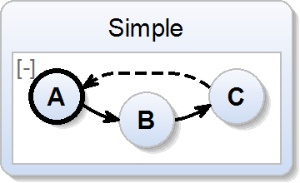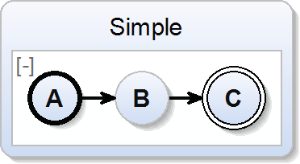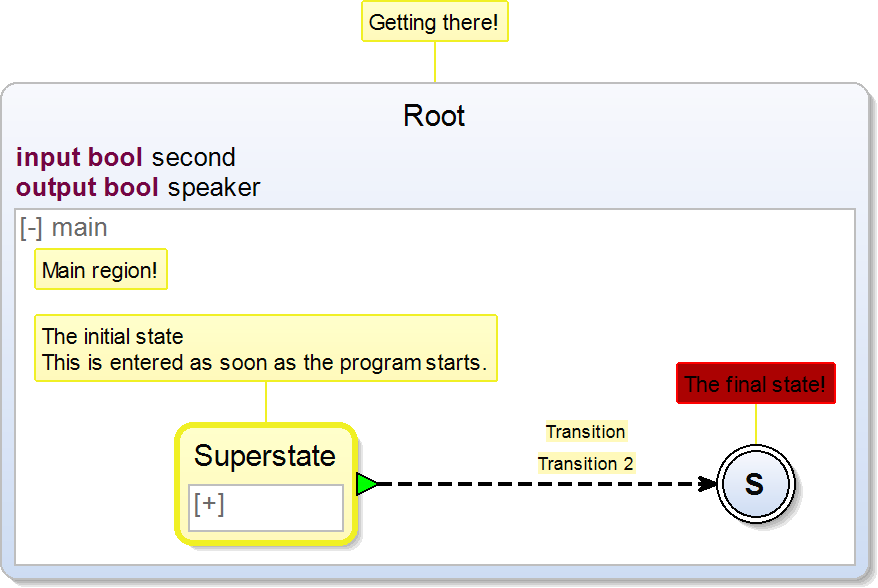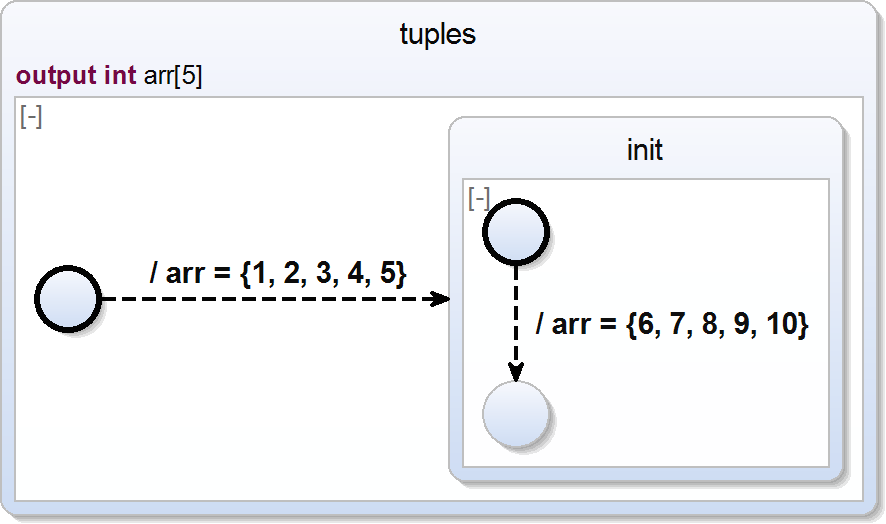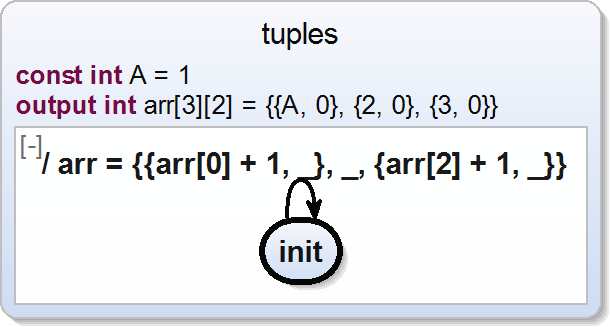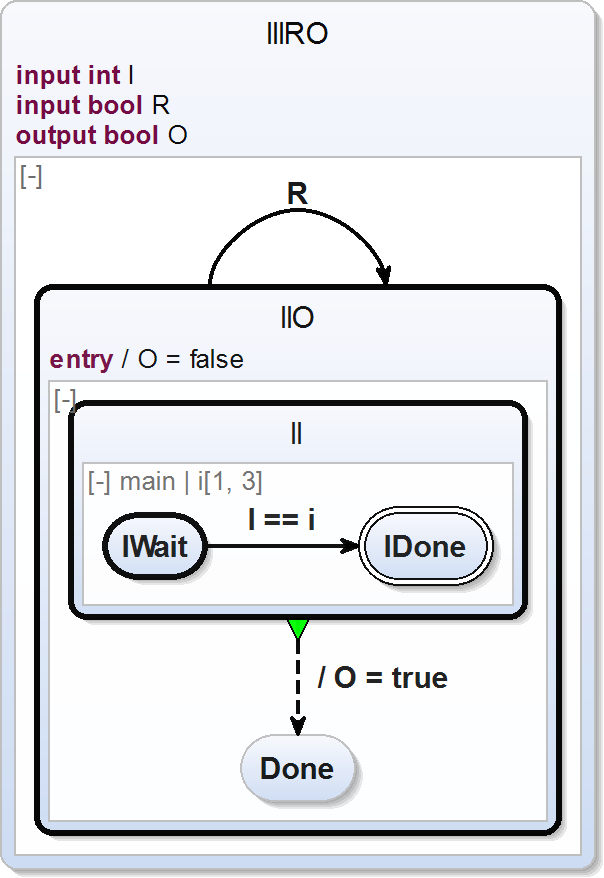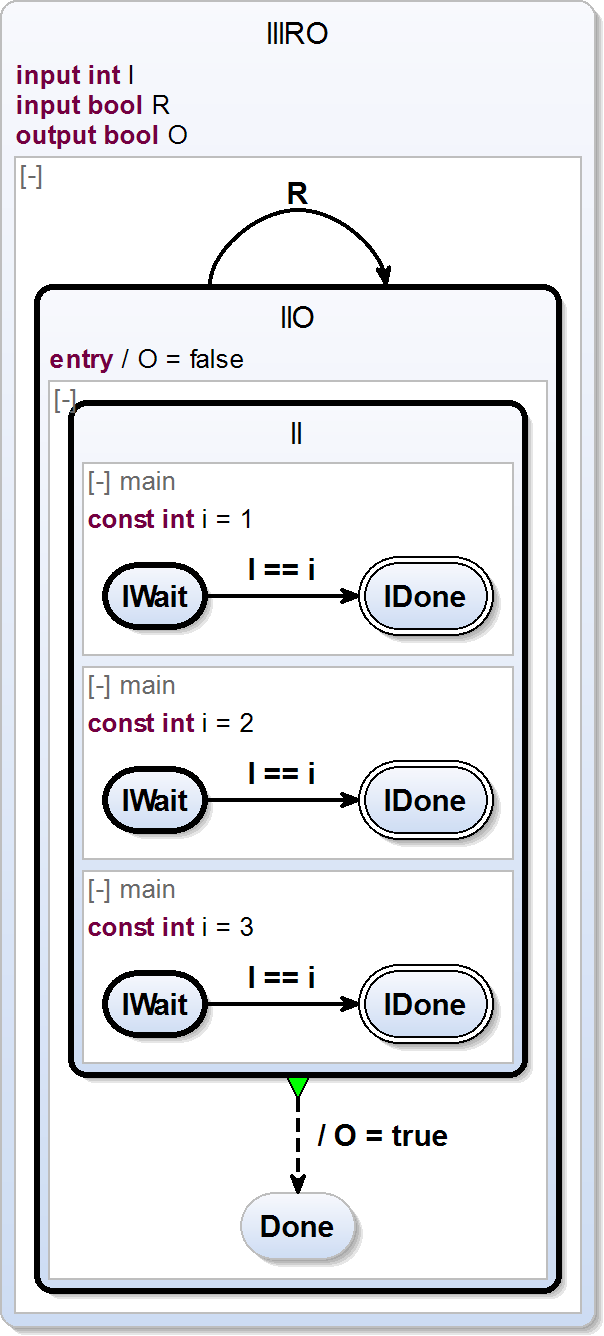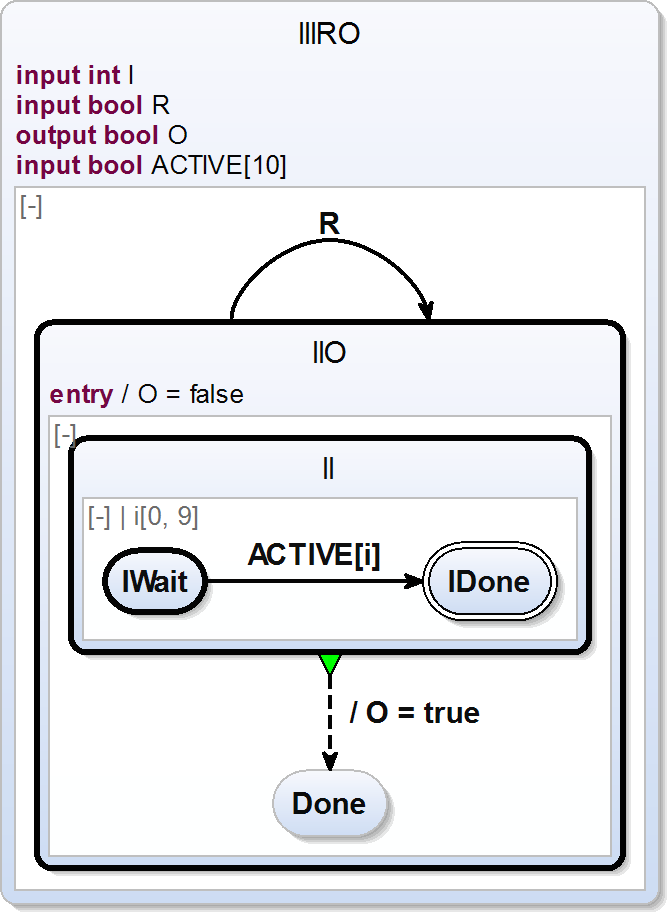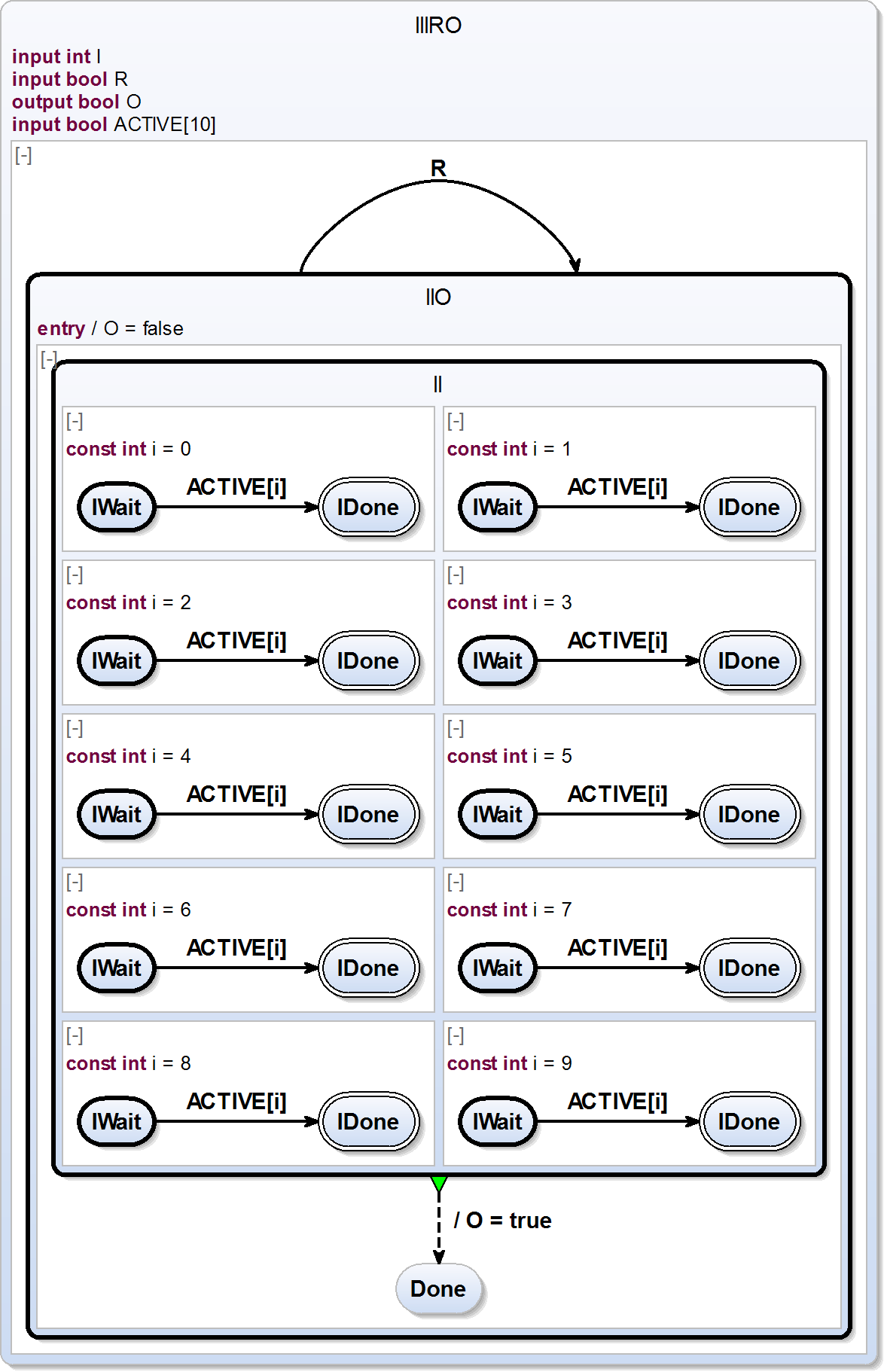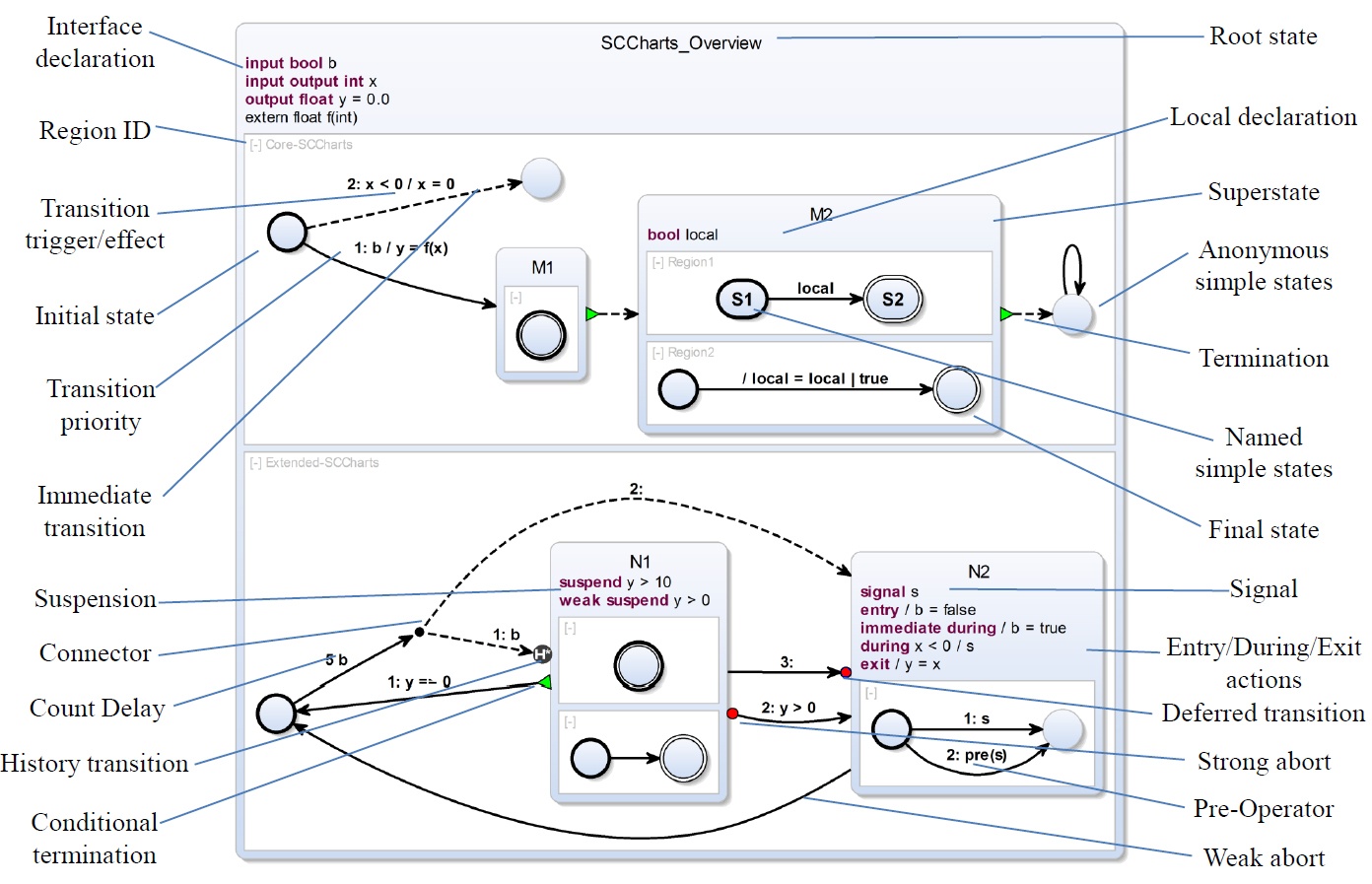SCCharts
Each SCChart starts with the keyword scchart followed by an ID. A ID can be any alpha-numerical combination, but must start with an alphabetical character or an underscore (a single underscore is prohibited). However, underscores are used to identify auto-generated constructs, so the modeler should not use them as prefix.
Simple States
One of the basic constructs of SCCharts is a simple state. A simple state does not have any inner behavior and can be connected via transitions to other states.
Initial State
To tell the program where to start, a state can be marked as initial. Exactly one state (per concurrent region, see concurrency) must be marked as initial.
Transitions
Transitions connect states. There are different kinds of Transitions, but we will restrict ourselves to the two basic types for now. (See below for more complex transitions.)
Delayed Transitions
Immediate Transitions
Explicit Delay Behavior
Final State
A state can also be marked as final. A final state marks the end of a thread. If a final state is reached on root level, the program terminates.
scchart Simple {
initial state A
go to B
state B
go to C
state C
go to A immediate
}
scchart Simple {
initial state A
go to B auto
state B
go to C delayed
final state C
}
Comments
You can simply use JavaDoc-style comments to comment you SCChart. The comments will appear in the synthesized diagram as comment boxes. You can toggle these boxes in your sidebar.
Additionally, for documentation reason, you can annotate different elements to give them a user-defined style. E.g. colorize a state or comment box for visual effect. Use html-like color codes for different colors. Please read more on annotations in the section below.
/**
* Getting there!
*/
scchart Root {
/** Test */
input bool second
output bool speaker
/**
* Main region!
*/
region main:
/**
* The initial state
* This is entered as soon as the program starts.
*/
@foreground f0f024
@background ffffcc
@backgroundTarget fff9ba
initial state Superstate {
initial state R1
}
/** Transition */
/** Transition 2 */
join to S
/**
* The final state!
* @foreground f00
* @background a00
*/
final state S
}
Tuples
You can assign a whole vector at once to an array.
scchart tuples {
output int arr[5] = {1, 2, 3, 4, 5}
initial state init {
entry do arr = {6, 7, 8, 9, 10}
}
}
To assign only certain values of an array, you can also use the ignore value placeholder. Consult the expression manual for further information.
scchart tuples {
const int A = 1
output int arr[3][2] = {{A,0}, {2,0}, {3,0}}
initial state init
--> init do arr = {{arr[0] + 1, _}, _, {arr[2] + 1, _}}
}
This would, for example, result in c code assignments as displayed on the right.
void logic(TickData* d) {
d->_g0 = d->_GO;
if (d->_g0) {
d->arr[0][0] = 1;
d->arr[0][1] = 0;
d->arr[1][0] = 2;
d->arr[1][1] = 0;
d->arr[2][0] = 3;
d->arr[2][1] = 0;
}
d->_g2 = d->_pg1;
if (d->_g2) {
d->arr[0][0] = d->arr[0] + 1;
d->arr[2][0] = d->arr[2] + 1;
}
d->_g1 = d->_g0 || d->_g2;
}
Trigger & Effects
hey can be guarded by a trigger that determines when this transition is enabled and they can have effects that are executed whenever this transition becomes active.
Overview
Here you can see an SCCharts graphical notation overview.
